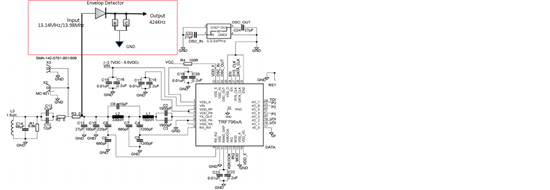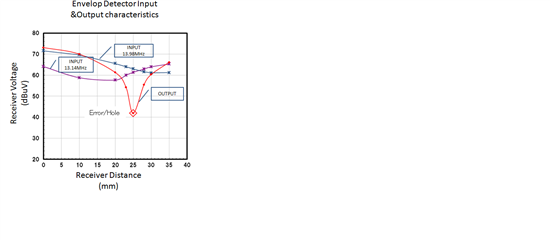Hi
Our customer is using TRF7960A in their RFID application and currently
they are trying to measure the response from the Tag (Subcarrier 424KHz) using an
Envelope Detector circuit as shown below. The circuit is as per TI's reference design.
The issue is the that at some point the response decreases extremely.
As shown in the below graph the response is decreased extremely at 25mm distance.
We are not able to understand the reason behind this issue.
Please let us know if there are any suggestions.
Regards
Prad



